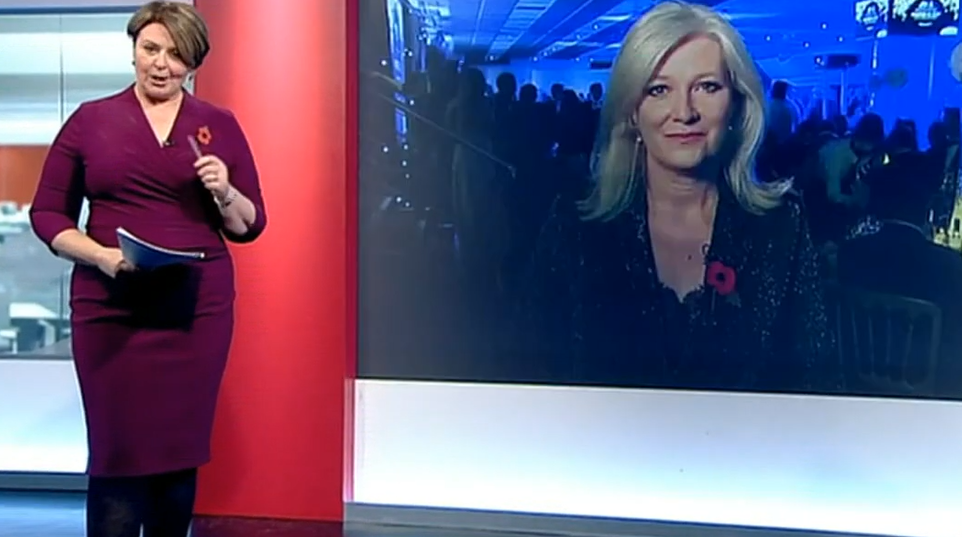Carol Malia’s transformation is one of the most genuine. She had established herself as a mainstay in British homes thanks to her cool, collected demeanor on BBC Look North. However, beneath her polished journalism, she was subjected to unwelcome and frequently harsh criticism regarding her weight. She was not defeated by that negativity. Instead, she turned it into fuel, and in just eight months, she lost her first five pounds, drastically changing both her health and mindset.
Her method was pragmatic rather than theatrical. After joining a local slimming group, she made a silent commitment that soon gained traction. There were no gimmicks or crash diets. She gradually embraced a fitness regimen focused on running in the Tyne Valley and adjusted her diet to include more whole foods, especially lowering her dependency on processed snacks. The struggle turned into a fulfilling rhythm in a matter of weeks.
Carol Malia: Personal and Career Details
| Category | Details |
|---|---|
| Full Name | Carol Malia |
| Date of Birth | November 28, 1968 |
| Age | 56 years |
| Nationality | British |
| Profession | Journalist, BBC Presenter |
| Known For | BBC Look North |
| Spouse | Gary Hudson |
| Children | Two |
| Reported Weight Loss | 3st 5lbs in 8 months |
| Reference | Exeter Natural Health Centre |
Her experience felt remarkably similar to that of many midlife women: balancing work, family, and health while subtly battling insecurities. Her balance—prioritizing nutrition without obsessing over every calorie, running without putting pressure on herself to win medals, and selecting social events that truly added value rather than sapped her willpower—was remarkably effective in her case.

She talked openly about staying away from passing fads. She didn’t try to lose weight to please other people. It was about finding a piece of herself that she had gradually lost after becoming a mother. She desired it for herself, not because her industry required it, but because she wanted to feel powerful, energized, and prepared to face the screen with assurance.
The fact that her metamorphosis reflected that of other well-known individuals who made a comparable leap is especially encouraging. Carol, like actress Rebel Wilson and singer Adele, didn’t Instagram her meals or make a big deal out of every workout. She let the outcomes do the talking. Her modesty made her relatable, particularly to working mothers who lack the luxury of celebrity trainers or personal chefs.
Her mental toughness had significantly improved. Her mood improved with each pound she lost. Her voice sounded lighter, and her on-screen persona exuded a carefree warmth that caught the attention of viewers, especially women over 40. Her posture straightened, according to her colleagues, not out of vanity but rather from a renewed sense of vitality. The public’s reaction was overwhelmingly positive, with many people contacting her to offer guidance, support, or just to express gratitude.
She discovered solidarity in motion by working with neighborhood running organizations. Malia wasn’t afraid of working out. Rather, she increased her stamina gradually, which felt particularly doable to fans who are afraid of intense workouts. She frequently brought up her “couch-to-5k” beginnings, highlighting the fact that gradual progress can have a profoundly transformative effect.
Her clothing change also turned into a subliminal but important indicator of transformation. Her elegant on-air attire—fitting blazers, structured dresses, and a poise that hadn’t always been so apparent—generated a flurry of comments on social media. She even started to be featured by fashion bloggers as an unexpected source of style inspiration, demonstrating how body confidence can affect all aspects of presentation.
She avoided the burnout that frequently accompanies weight loss efforts by using strategic planning. Rather than cooking separate meals, she adapted recipes and included family meals instead of isolating herself. She needed her husband and kids as cheerleaders to keep her grounded. This degree of integration, which was both useful and consoling, was especially advantageous.
Health journalists and wellness coaches are now using her story to promote body-positive weight loss. A cultural move away from crash diets and Photoshop-filtered perfection is reflected in it. Rather, it honors improvements in health, emotional development, and genuine self-respect. By doing this, it gives the media discussion about women and aging a much-needed voice.
Malia responded to trolls in a very obvious way; instead of clapping back online, she lived better off-line. Her metamorphosis took place outside of the gym and at the dinner table as well. She became a real-life example of how to put one’s health first without sacrificing one’s identity as it played out on TV screens, in offices, and in living rooms.
She provided a model that other women, particularly those over 50, who frequently feel left out of popular wellness narratives, could follow by incorporating movement, mindfulness, and doable adjustments. Her example served as a reminder that growing older should not be a hindrance to advancement but rather a sign of wisdom.
Long after losing the weight, Malia still sets an example for a sustainable, rather than extreme, maintenance lifestyle. She continues to eat well-balanced meals, run, and occasionally indulge without feeling bad about it. Even though the weight loss was only temporary, the mental change was remarkably long-lasting.
Her impact extends beyond her physical presence. Carol Malia’s openness has contributed to redefining what transformation in public life can entail—one that is devoid of drama, full of dignity, and incredibly empowering.
